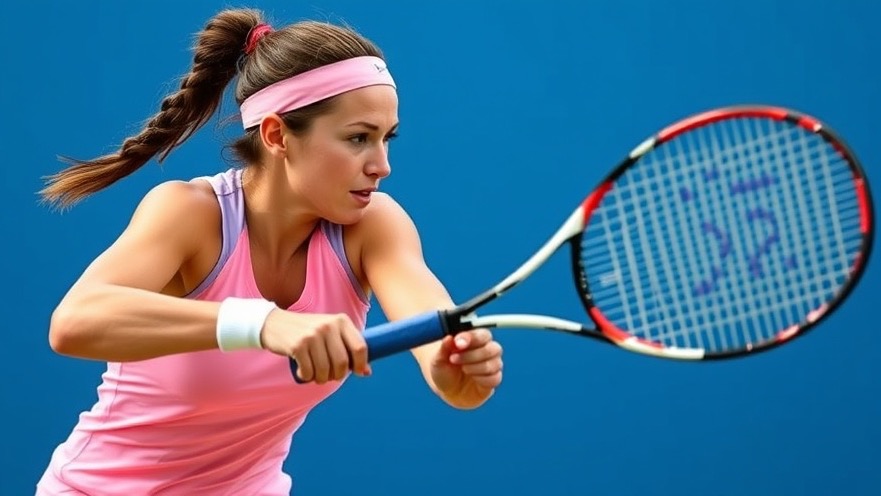
The Crucial Connection: Why Your Swing Isn't Getting Results
Every aspiring player has been there—striking the ball in practice, your technique feels impeccable, yet the results just don’t match the effort. In the world of tennis, it’s easy to believe that if your swing looks good, it should translate to success on the court. However, what truly matters is not just how you swing but how that swing interacts with the ball at the moment of contact. This critical interaction can make all the difference in whether your shot lands where you intended or misses the mark entirely.
In 'Why your Swing sucks when you hit the Ball,' the discussion dives into the importance of contact during your swing, exploring key insights that sparked deeper analysis on our end.
Understanding the Impact of Contact Point
One of the most important lessons in enhancing your game is understanding the contact point. This refers to where your racket meets the ball—as this moment dictates the trajectory, spin, and power of your shot. You can have the best swing form, but if your timing or position at contact is off, the quality of your shot will suffer. In fact, many players may not even realize they are making crucial errors during this brief instant of contact.
The Power of Video Analysis in Practicing Your Swing
So, how do you ensure that your shot-making is precise? One excellent method is to use video analysis. Take a slow-motion video of your swing to dissect exactly what happens the moment you make contact with the ball. This technique allows you to pinpoint issues in your timing and racket position. For instance, if your racket head isn't positioned high enough at contact, your shots will lack the desired topspin or trajectory. Watching these slow-motion clips can reveal the subtle nuances of your swing that are difficult to see in real-time.
Progressive Drills for Consistency
Building consistency when hitting the ball requires practice. Start by experimenting with your contact point: begin close to your body without taking a full swing, focusing solely on getting the right angle and position of your racket. Once you feel ready, slowly incorporate your upper body rotation and begin to extend your swing. This gradual progression allows your body to adapt while ensuring you consistently meet the ball correctly for the shot type you desire.
Moving Beyond Technique: The Importance of Footwork
Good footwork is essential when it comes to hitting the ball effectively. As your swing improves, so should your ability to move towards the ball. You may find that tracking the ball becomes crucial for understanding how best to position yourself—for flat shots, for example, meeting the ball farther in front of you may be advantageous. With each shot, work on improving your footwork to move naturally into position; it is this combination of movement and technique that ultimately leads to better performance.
Adapting to Different Playing Conditions
As players advance in skill level, they often encounter varied conditions on the court, including different ball speeds and styles of play. Understanding that you might need to adjust your contact point based on your opponent's shot will set you apart as a player. For instance, if you're dealing with faster balls, your ability to react and find the proper position for contact becomes even more critical. Consistent practice allowing you to earn that reaction time will greatly benefit overall performance.
So the next time you find your swing feels perfect but results in inconsistent shots, remember that the magic happens at the moment of contact. By utilizing video analysis, engaging in progressive drills, and mastering your footwork, you can enhance your shot-making abilities and lead all your shots exactly where you intended.
Don't let technique blind you; focus on the connection with the ball, and you'll start seeing improvements that can elevate your game to new heights.
 Add Row
Add Row  Add
Add 




Write A Comment